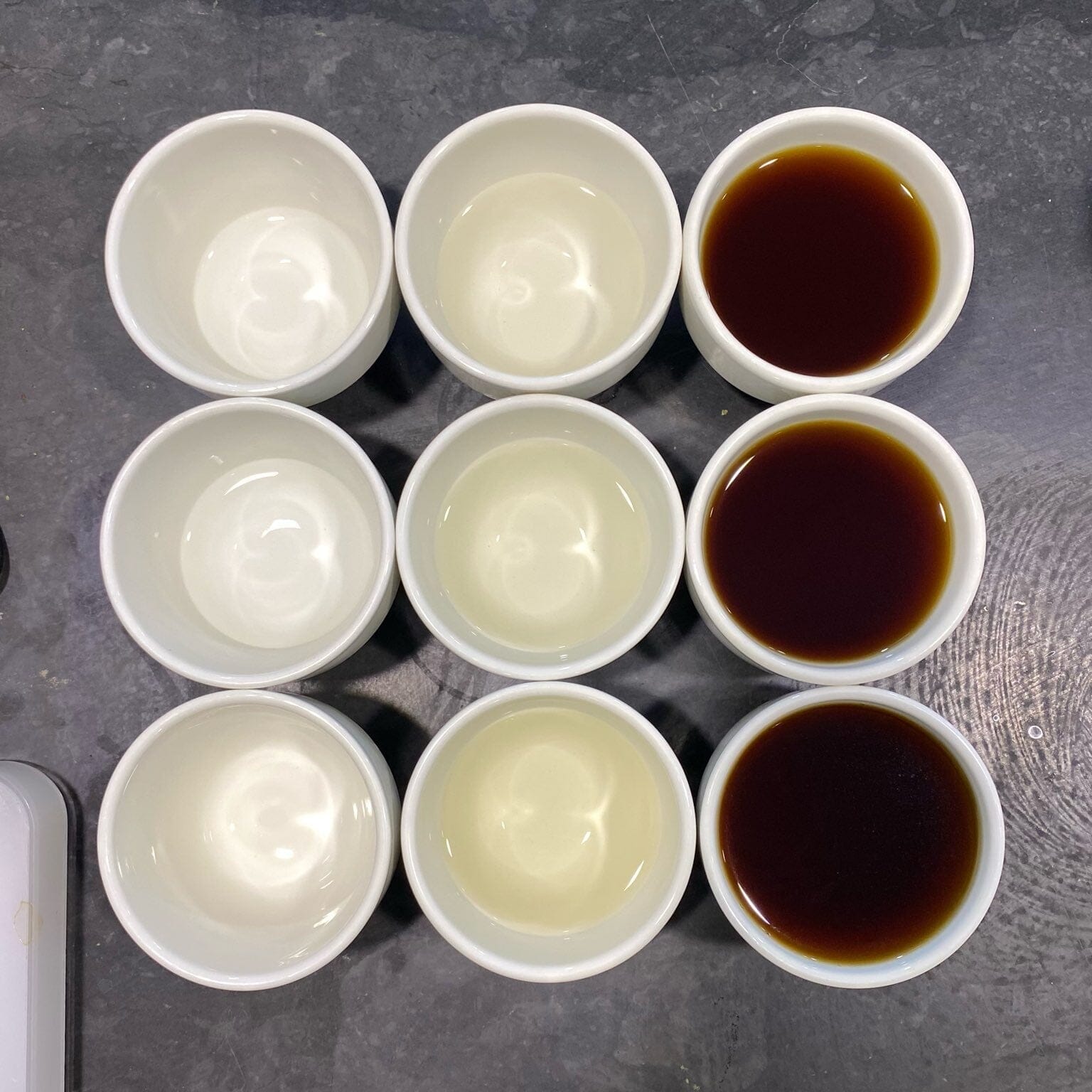

Comparing Paper Filters: A Case Study
Are all paper filters made equal?
We know that filtering your coffee makes a difference. By using different filter materials like metal mesh filters, cloth filters or paper filters you can get a different cup profile. By using paper filters, coffee oils are absorbed by the filter and the resulting cup should be free of sediment. This gives you a cleaner cup that has a lighter mouthfeel in comparison to other filter methods. But, does the type of paper filter make a difference? Currently there are three different cone shaped filters on our website (Kinto Slow, Origami, V60) but, there are many more available out in the wild. But, it's just paper right? How much of a difference can there be?
Method
The way I am testing the filters is by their physical properties without relying on too much sensory analysis. The brew method for this experiment is not the best way to brew your coffee, but it is a consistent method.
I started by rinsing my filters, 100g of 96°C water in one circle and then down the middle. I then timed how long it took for the final drop of water to come down. Afterwards, I poured in 12.5g of delicious Rosso Coffee Roasters Victor Hernandez coffee on a coarse grind. Then I added 200g of 96°C water in the center with no bloom.
Results
|
Weight Before Rinse |
1.6 g |
1.2 g |
1.1 g |
|
Texture Inside |
Smooth, |
Fluffy, |
Rough, |
|
Texture Outside |
Same as inside |
Bumpy, |
Very smooth |
|
Rinse Drain Time |
00:25:299 |
00:24:042 |
00:21:688 |
|
Weight After Rinse |
4.3 g |
4.9 g |
3.8 g |
|
Rinse Water Flavour |
Slightly drying |
Brown paper bag |
drying |
|
Total Brew Time |
2:23 |
2:19 |
2:14 |
For all three brews, the brews were quite fast with the stream finishing before the one minute mark. However, the remaining drops took over a full minute before coming to an end. The rinse water flavour varied as the water cooled. The paper taste was not apparent until the rinse water cooled down significantly.
Conclusion
So which filter produced the best coffee? Well that would depend on how you like your coffee. For the most balanced cup, the V60 unbleached filters are our winners in this category. While nothing stood out about this cup, the body was as expected for a filter coffee (clean/low) and the acidity was in check.
The filter that gave us the most acidity were the Origami filters! The faster flow and less dense texture can be attributed to the higher acidity. This was also the sweetest cup and had a slightly heavier body.
And finally, the Kinto filters. This cup had the slowest flow rate and gave us the greatest clarity. I found that the body was on the lighter side. This cup was the most tea-like.
| Kinto | Origami | V60 | |
| Strengths | Clarity | Acidity | Balance |
So does your paper filter matter?
In the grand scheme of things, I will admit, not so much. All three paper filters used will result in a tasty cup of filter coffee! Having the right filter for your style of coffee can make your mornings easier. But if you were looking to make a coffee taste as best as it can, these little differences will bring much bigger differences when properly dialed in. With proper technique and thought-out brew patterns, the small differences can make a good cup into a fantastic cup!










